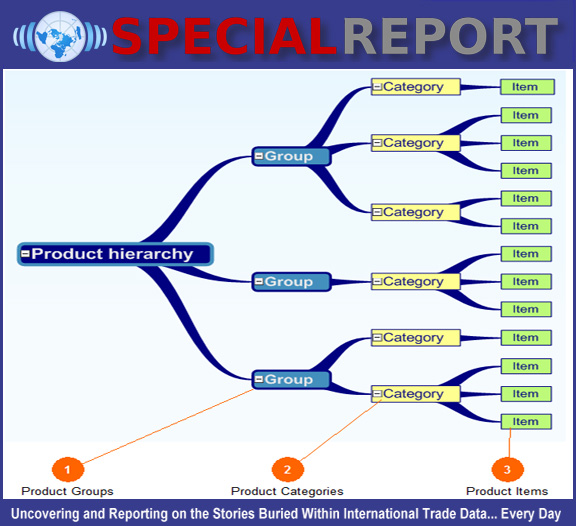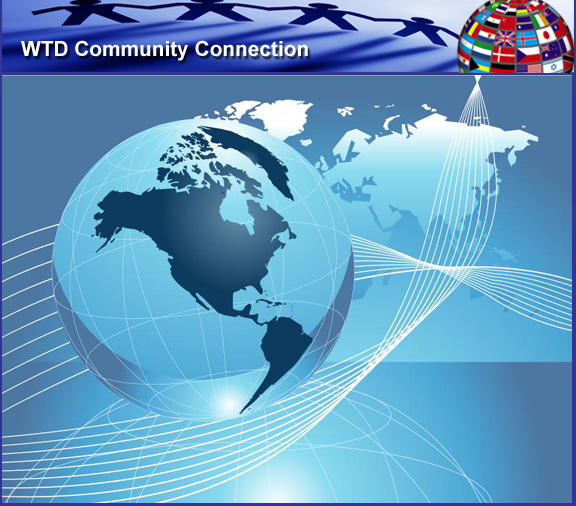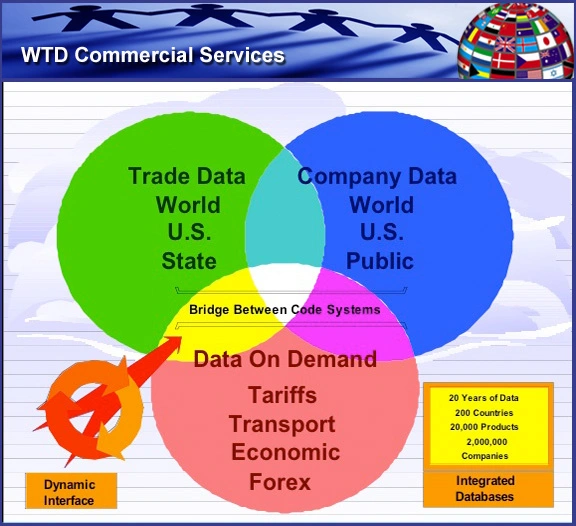The official language of international merchandise trade exists within a Harmonized System of product codes; “a tariff nomenclature (which) is an internationally standardized system of names and numbers for classifying traded products developed and maintained by the World Customs Organization (WCO)… [used by] more than 200 countries, customs and economic unions, representing more than 98% of world trade.”
The HS (sometimes called HTS for Harmonized TARIFF System) is organized in 21 sections and 96 chapters. The 96 top-level two digit categories (let’s call them “parents”) form a hierarchical lineage containing over 1,000 four digit children and some 6,000 six digit grandchildren. “To ensure harmonization, the contracting parties (countries) must employ all 4- and 6-digit provisions and the international rules and notes without deviation, but are free to adopt additional subcategories and notes.”
A familiar idiom states, “Give the devil his due”. The primary reason behind the HTS system of product identification, besides providing a common reference point for trading purposes, is taxation. It’s the all important middle “T” in HTS. Although Tariffs & Duties can be applied to both imports and exports, “Tariffs are usually associated with protectionism, a government’s policy of controlling trade between nations to support the interests of its own citizens. For economic reasons, tariffs are usually imposed on imported goods.”
Each country further applies additional sub-categories beneath the universally agreed upon 6 digit HS provisions in order to track more precisely the commodities and products they are most interested in “protecting”; i.e. monitoring and taxing. These subcategories (great-grandchildren, great-great grandchildren, etc.) can generate branches of 8, 10, 12 or more digits. “The Harmonized Tariff Schedule of the United States (HTS) is the primary resource for determining tariff classifications for goods imported into the United States (and can also be used in place of Schedule B for classifying goods exported from the United States)”. There are over 17,000 unique ten-digit HTS classification code numbers.
One of the very first tasks that many Trade Consultants undertake in working with a newbie importing or exporting company is to help them assign the appropriate HTS codes to their respective product(s). Most U.S. companies don’t have a clue. In China, I think they learn the HS system in elementary school along with English. Improperly classified products are likely to have a very difficult journey through Customs and incur additional costs.
One of the biggest problems in the process of transforming trade data into trade intelligence is inherent in the HTS nomenclature. It is extremely obtuse. The descriptions are almost impossible to understand. The classification “logic” varies from chapter to chapter, category to category. The most commonly used term is the ever endearing and everlasting designation: NESOI. No, it’s not a type of plastic, article of clothing or technological component. It means, NOT Elsewhere Specified Or Indicated. World-wide imports and exports of NESOI have experienced exponential growth during the last 10-20 years during the information age.
By and large it’s all a form of Trade Technocracy, a malady which I have spent a sizable portion of my tenure as a Trade Intelligence Professional attempting to remedy.


 07/07/2013
07/07/2013 


 Beyond the resources referenced above, which are mostly places to get hard facts, data and charts, it still remains a matter of interpreting the data, making sense of it, seeing patterns, making observations, and “spicing” /dressing it up a bit with some Google research as well as your own intuition (based upon intelligence, knowledge and experience).
Beyond the resources referenced above, which are mostly places to get hard facts, data and charts, it still remains a matter of interpreting the data, making sense of it, seeing patterns, making observations, and “spicing” /dressing it up a bit with some Google research as well as your own intuition (based upon intelligence, knowledge and experience).













 America’s Competitiveness Forum
America’s Competitiveness Forum Stopfakes
Stopfakes STATISTICS:
STATISTICS:

























































































































































































































































































































































